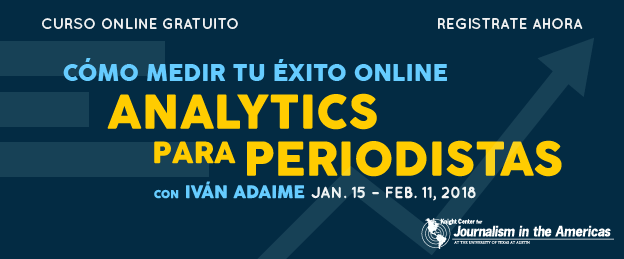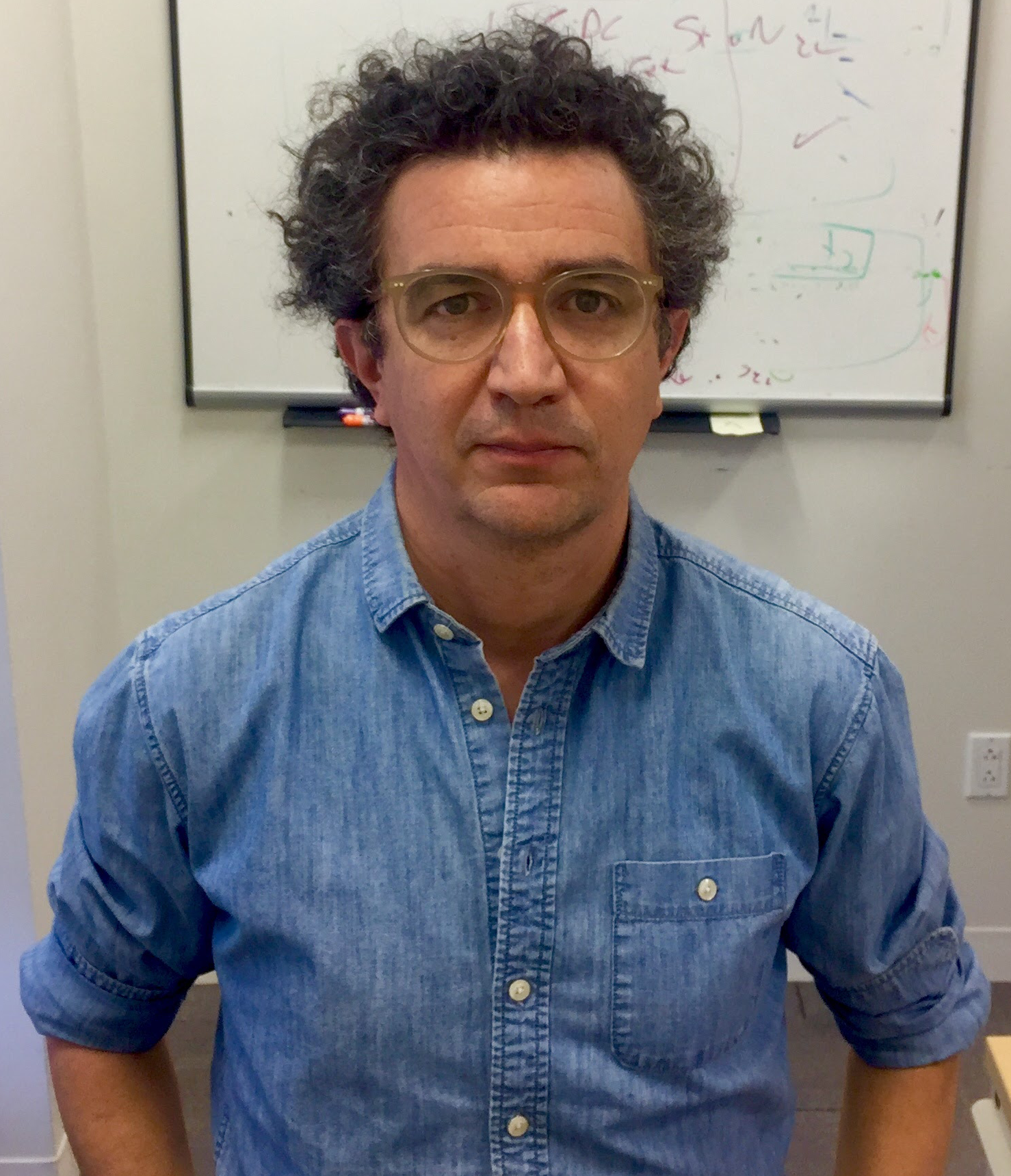
The amount of available data around who is visiting your website and what they are reading can be overwhelming. But knowing how to interpret this data can mean the difference between success or failure for your project.
Join the Knight Center for Journalism in the Americas and instructor Iván Adaime, executive vice president for digital at media company Impremedia, for a related Spanish-language online course, “How to measure your success online: Analytics for journalists.”
This four-week course, which will provide an introduction to concepts and methodologies for analyzing your audience, will run from Jan. 15 to Feb. 11, 2018. Registration is open now.

The course has been tailored to the specific needs of content producers who need to understand how to use analytics tools, many of which were created with other industries in mind.
“In a context in which audiences continue to move relentlessly toward digital, not knowing them is a luxury that media outlets can no longer afford. It is time to work with metrics and analytics designed by and for content producers instead of using metrics designed for electronic commerce,” said Adaime, a digital media specialist who has been using analytics for years to develop audiences and business for media companies in Latin America and the United States.
“Through examples and best practices, this course will help you put analytics at your service and not vice versa,” Adaime added. “If you are a journalist, it will help you understand which metrics to use based on your needs. If you are already working with data, you will find some examples that will allow us to advance beyond page views –which unfortunately is often the only metric used– towards a more comprehensive vision of analytics.”
The four weekly modules will look at basic concepts of analytics for content; measuring production, results and drafting performance; understanding audiences using segments; and measuring results on social platforms like Facebook, YouTube and Twitter.
After the course, you will have learned:
Adaime will teach the course through video lessons, readings and a test. Students also are expected to participate in forums and discussion areas on the course site, JournalismCourses.org. The course is asynchronous, meaning students can complete activities throughout the week at their own pace and selected times. However, there are suggested weekly deadlines so as not to fall behind.

Anyone interested in learning about analytics for content production is invited to participate, but the course is tailored to journalists and content creators. No previous experience with these concepts, tools or resources is necessary. Students just need a computer with an internet connection, and it’s recommended to have access to a Google Analytics or similar account. Adaime will also provide resources for other web analytics tools and resources.
“We are delighted to have found an expert from Latin America, with experience in both the industry and in education, to teach this MOOC on one of the most important skills journalists, and content creators in general, need to know today,” said professor Rosental Alves, founder and director of the Knight Center at the University of Texas at Austin.
“The internet offers a huge amount of data about audiences, but many publishers don’t know how to use that information. The concepts that Adaime will teach in this free online course are practical and can help journalists to turn around the performance of their websites,” he added.
Adaime brings to the course years of experience as both a professor and professional specializing in audience and business development of digital media.
Prior to starting at Impremedia in 2012, he worked for Argentine media company S.A. La Nación as the senior online marketing and business development manager. He also served as digital media manager for La Nación’s magazines, drastically increasing audience numbers to the publications’ sites.
Additionally, Adaime worked for more than a decade as a professor of new media and technology at Universidad de Buenos Aires. He created the curriculum for the pioneering electronic arts’ program at Universidad Nacional de Tres de Febrero, where he also worked as professor of communication.
Knowing who is reading your site and how best to reach them with relevant information is essential to running a successful and sustainable digital media outlet. Don’t miss this opportunity to ensure your site’s success.
The Knight Center for Journalism in the Americas was created in 2002 by Professor Rosental Alves, Knight Chair in Journalism at the University of Texas Moody College of Communication, thanks to generous donations from the John S. and James L. Knight Foundation. The Knight Center’s distance learning program started in 2003 and is also funded in part by the Knight Foundation. In the last five years, the Knight Center’s MOOCs have reached more than 120,000 people from more than 170 countries.

Knight Center for Journalism in the Americas
300 West Dean Keeton
Room 3.212
Austin, TX, 78712
Phone: 512-471-1391
Email: journalismcourses@austin.utexas.edu